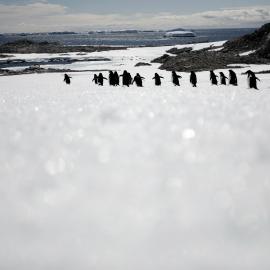To the Editor:
Jessica Wallack and Veerabhadran Ramanathan ("The Other Climate Changers," September/October 2009) make a strong case for why governments should be concerned about climate-forcing agents other than those regulated by the UN Framework Convention on Climate Change and the Kyoto Protocol. To address this important issue, in April 2009 the U.S. government raised the subject within the Arctic Council -- a high-level forum of the eight Arctic nations -- and now, with Norway, co-leads the newly established Arctic Council Task Force on Short-Lived Climate-Forcing Agents.
The goal is for the Arctic states to take the lead in slowing the deterioration of the Arctic cryosphere through practical, affordable action to reduce the sources of black carbon and ground-level ozone. If they do, other regions of the world where these pollutants are emitted may follow suit. It is important for the scientific community to continue focusing on short-lived climate-forcing agents and for policymakers to educate the public about the benefits of limiting their emissions. Through the Arctic Council, scientists and policymakers are doing just that.
DAVID A. BALTON
U.S. Deputy Assistant Secretary for Oceans and Fisheries
To the Editor:
Jessica Wallack and Veerabhadran Ramanathan correctly argue that reducing emissions of light-absorbing carbon particles ("black carbon") is an effective way to address climate change. They write, "Crop waste, dung, wood, coal, and charcoal are the cheapest, but also the least efficient and dirtiest, fuels, and so households tend to shift away from them as soon as other options become reliably available."
But this line of thinking leaves out the difficulties in changing behavior. The community I work with in rural Morocco as a Peace Corps volunteer faces the threat of deforestation. I have tried, with little success, to persuade people to use more efficient wood-burning stoves to address the issue. Gas ovens have been distributed to replace wood-fueled ones, yet they are not used. The technology is available; the change in behavior lags behind.
Although Wallack and Ramanathan acknowledge this, they sweep the concern aside by citing
the speed with which technology spread through the developing world during the "green revolution" in agriculture in the second half of the twentieth century. This is a poor analogy. The benefits of adopting new technologies then were immediate and obvious for farmers in the developing world. In the case of black carbon, what is expected is radical change for the benefit of preventing climate change, which is neither immediate nor obvious.
Still, reducing black carbon emissions is an obtainable goal. Technologies will have to be adapted to meet different communities' needs, which will require an intimate knowledge of various cultures and customs. And most important, the benefits from using the new technologies must be immediate, and the appropriate incentives must be in place to make them cost competitive.
DUNCAN GROMKO
Peace Corps volunteer, Morocco
